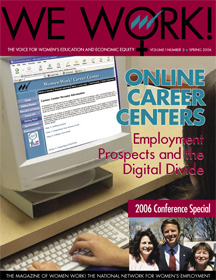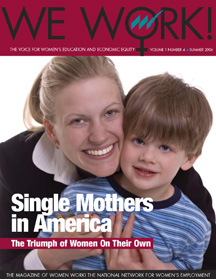Use the Women Work! Policy Tracker to follow developments in federal legislation that affects women entering, re-entering, and advancing in the workplace.
Workforce Investment Act (WIA)
The nation’s workforce investment system, WIA is long overdue for reauthorization. Women Work! advocates for reforms in WIA to increase women’s access to training for high-skill, high-wage, and nontraditional careers.
Pay Equity Legislation
The Lilly Ledbetter Fair Pay Act and the Paycheck Fairness Act are critical to women’s workplace equity and economic security.
Higher Education Act (HEA)
The 2008 reauthorization of the Higher Education Act contains provisions that will aid nontraditional students in obtaining higher education.




